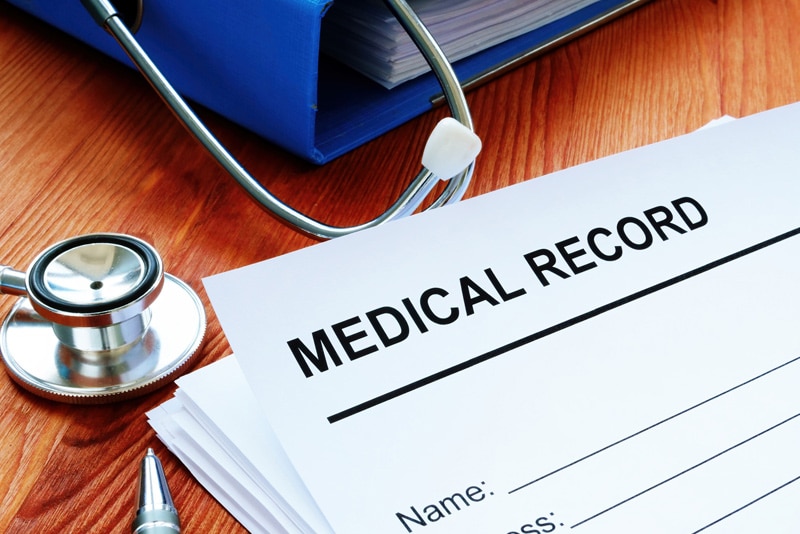
Medical transcriptionists (MTs) basically convert the physician’s dictated report into text format and highlight any discrepancies. Though this may sound relatively simple and straightforward, there’s more to it. A reliable and skilled medical transcription service provider will ensure that the physician receives an accurate, timely, and secure record. With computerized audio-to-text conversion by a speech recognition software, medical transcriptionists have a crucial role in editing the results. They make the necessary corrections by reviewing the text while listening to the original audio file to ensure accurate capture and formatting of the content. Experts will provide flawless reports by editing them and correcting discrepancies in grammar, style, and even clinical information, saving the medical practice valuable time and resources that would go into making these corrections.
How MTs Preserve the Integrity of the Medical Record
What exactly is the MT’s role in editing patient medical records? The Association for Healthcare Documentation Integrity (AHDI) provides specific guidelines about this. The AHDI notes that MTs should proactively correct discrepancies in dictation that fall within the scope of their interpretive skill set and clinical knowledge. This is important even in a verbatim environment. MTs can preserve the integrity of the medical record by:
- Providing an accurate account of the conversation between the provider and the patient during that encounter
- Preserving the tone and scope of that encounter
- Ensuring a clinically relevant long-term care record
- Honoring the physician’s dictation style, recognizing error/inconsistency in the record, and correcting them
- Avoiding correcting or changing anything that cannot be confirmed
- Flagging errors that cannot be corrected and notifying the provider about them
What does Editing the Medical Record Involve?
Experienced MTs clearly know when to edit the medical record and the kind of corrections that can be made.
- Grammar and Punctuation: Errors in grammar and punctuation need to be corrected, including the instructions that the clinician provides on paragraph breaks and punctuation. Common errors in dictation related to subject-verb agreement in sentences, transposition of personal pronouns and pluralization (Latin and Greek plurals, for e.g., the plural of axilla is axillae, and conjunctiva is conjunctivae.
- Syntax: Word order in sentences have to be corrected, which is crucial to ensure clarity of communication. While the physician may use the correct vocabulary and concepts, the MT need to ensure appropriate word order and avoid misplaced modifiers. A modifier is a word, phrase, or clause that is improperly separated from the word it modifies/describes and sentences with misplaced modifiers can seem illogical. Take the following example provided by BioMedical editor: It is incorrect to say “the 49-year-old patient experienced severe pain in the left heel when walking for two months”. The sentence should be corrected as: “For two months, the 49-year-old patient experienced severe pain in the left heel when walking”.
- Spelling: Electronic spell checkers are a very useful tool for medical transcriptionists as they can identify misspelled words in the record. However, experienced transcriptionists will additionally verify the clinician’s dictated spelling using reputable resources. If the spelling can be verified, transcriptionists will correct it. If the term cannot be verified, they will retain the spelling provided by the clinician and flag it for verification.
- Slang, Jargon, and Abbreviations: Physician dictated notes often have clumsy use of language and frequent neologisms. Medical transcriptionists need to edit unsuitable slang words and phrases to avoid misinterpretation. Corrections are made by consulting a reputable industry reference book or resource to verify what abbreviations are acceptable and which terms need to be edited. Obscenities, derogatory or inflammatory remarks, and double entendres are left blank and flagged, unless the clinician has dictated them as part of a direct quote.
- Back Formations: Coming to new words formed by altering an existing word or back formations, transcriptionists need to know which ones have become acceptable. Back formations that are widespread and acceptable include ‘diagnosis-to diagnose’ and ‘Bovie-bovied’ (AHDI). Care should be taken to avoid illogical back formations.
- Incorrect Terms: Experienced medical transcriptionists are well versed in English and medical terms and will recognize and edit incorrectly dictated terms. Making such corrections also requires interpretive judgment and the ability to recognize ambiguity in dictated terms and phrases.
- Contextual Discrepancies: Common sense and critical thinking can resolve certain inconsistencies in the physician’s statements. For instance, if a female patient is referred to as ‘he’ in the report, the transcriptionist can easily make the correction. However, other contextual discrepancies that cannot be resolved should be flagged for verification by the clinician. An example would be directional and positional terms (like left and right), which the transcriptionist should never try to guess.
- Transposition of Terms and Values: This is one of the most common medical dictation mistakes. If the transcriptionist can easily identify flipped or transposed words or values, they can be edited appropriately. If there is any doubt, about the terms or the correlation of values, the report should be flagged.
- Demographics: Accurate patient demographics is essential for managing health information. With dictation software, the demographics are automatically at the point of dictation and electronically linked with the transcribed record. The role of the transcriptionist is to ensure precise demographic mapping by checking the information captured against the physician’s dictation.
Even is this age of electronic health records and speech recognition systems, the human medical transcriptionist has a significant role to play in ensuring error-free transcription with proper formatting and grammar correction. Moreover, continuous speech recognition technology can malfunction, and the support of a backup medical transcription service can prove invaluable when it comes to maintaining accurate and timely medical records.


